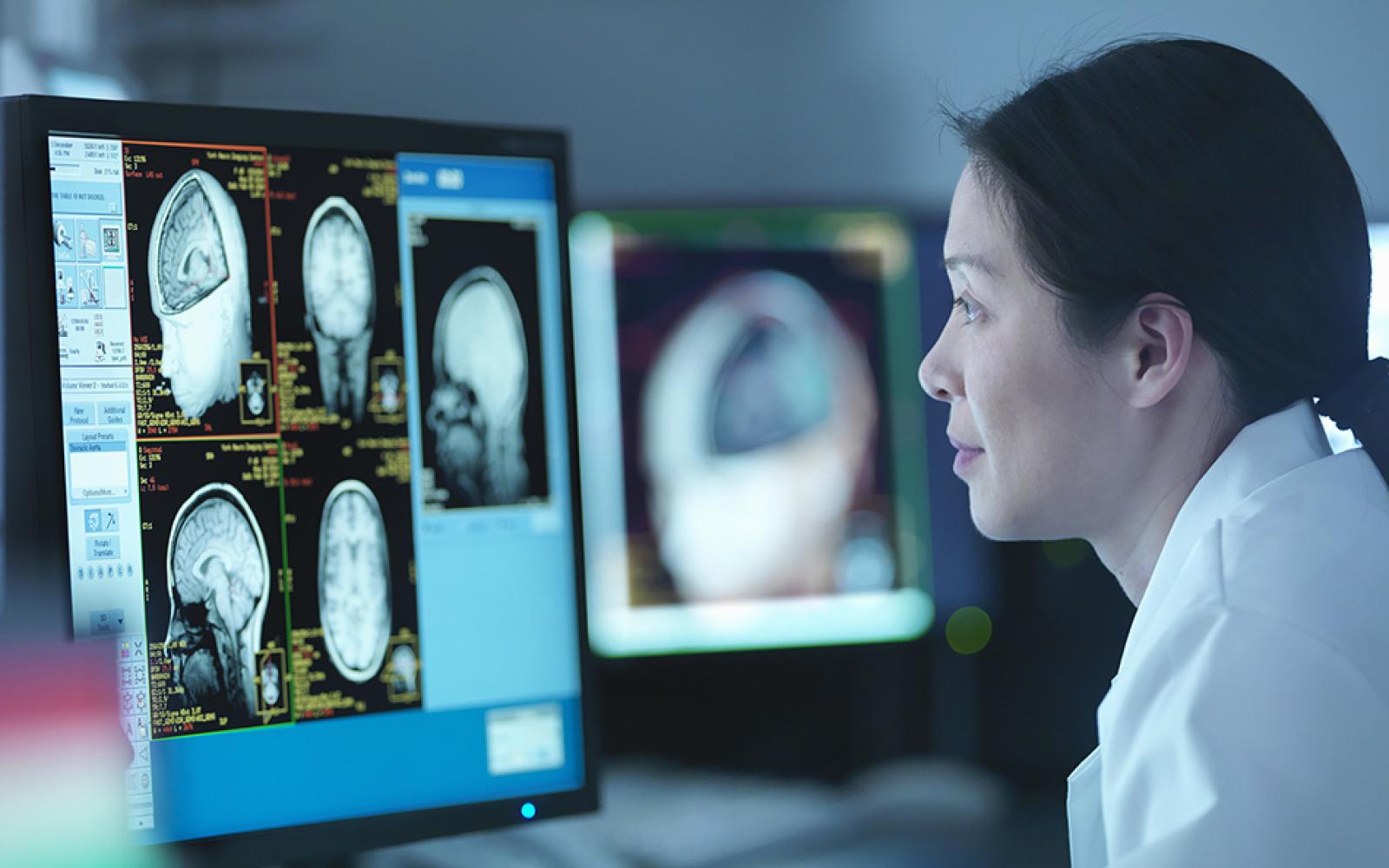
Immunotherapy
Immunotherapy is a type of treatment that helps a patient’s immune system fight cancer.
Normally, the immune system recognizes and eliminates foreign or abnormal cells, like bacteria, viruses, and even cancer cells. However, the immune system cannot always recognize tumor cells for various reasons; some tumor cells may not look different enough from normal cells, while other tumor cells have specific features that allow it to “hide” from the immune system.
Some immunotherapy treatments help “mark” cancer cells for attack by the immune system, while others boost the patient’s immune system more generally. Many different types of immunotherapy are currently being developed and tested for the treatment of cancers, including brain tumors.
CAR (chimeric antigen receptor) T cell therapy involves engineering immune cells to more effectively find and attack cancer cells. T cells are a critical part of the body’s immune response, responsible for destroying cells infected by pathogens. The process of engineering a patient’s T cells to more effectively kill cancer cells involves the following steps:
- T cells are collected from the patient’s blood sample.
- T cells are genetically engineered to produce synthetic proteins (called chimeric antigen receptors) on their cell surface, that are designed to recognize and bind specific molecules (or antigens) found on tumor cells.
- The engineered T cells are grown in the lab to produce greater quantities.
- The engineered T cells are infused back into the patient’s body, where they will target and destroy tumor cells.
Recently approved for use in childhood leukemia, CAR T-cell therapy is an exciting and promising area of active research. Ongoing work is being done to develop, evaluate, and improve this technique for the treatment of advanced brain tumors like glioblastoma.
Some treatments involve the use of genetically engineered viruses that are no longer pathogenic, or disease-causing. Instead, the viruses can be used to deliver specific genes to certain cells, causing them to make those proteins. For example, Ad-RTS-hIL-12 is an engineered virus that delivers the IL-12 protein and increases its production in specific cells. This is considered an immunotherapy treatment because IL-12 is a protein that may enhance the ability of the immune system to kill tumor cells. An ongoing clinical trial at UCSF is currently investigating Ad-RTS-hIL-12 for treating patients with recurrent high-grade gliomas, such as glioblastoma.
These drugs help block regulatory mechanisms that normally prevent the immune system from being overactive. Several of these drugs are currently being tested for treatment of brain tumors like glioblastoma and other gliomas:
- Ipilimumab is a drug that blocks CTLA-4, a protein that normally prevents inappropriate or prolonged activation of a specific group of T-cells. By interrupting this regulatory mechanism, ipilimumab boosts T-cell proliferation and activity, including against tumor cells. This immunotherapy drug is already approved for use against melanoma, and is currently being tested for use in glioblastoma.
- Nivolumab and pembrolizumab are both antibody-based treatments designed to block PD-1, a protein that normally protects the body from attacking itself. PD-1 does so by detecting a molecular signal (called PDL-1) made by various cells across the body. Some cancer cells take advantage of this protection mechanism by making the protective signal themselves. Blocking PD-1 with nivolumab or pembrolizumab allows the immune system to activate the T-cells and recognize these tumors as cells to be attacked. Both of these drugs are administered intravenously.
These drugs are designed to bind to specific molecules in the body, including proteins that are enriched in or unique to tumors. This can “tag” cancer cells so that the immune system recognizes and destroys them, or bind to specific proteins to block their function. For example, nivolumab and pembrolizumab (described above) are both monoclonal antibodies against PD-1, an immune checkpoint protein.
Treatment vaccines are designed to help T cells recognize and target tumor cells, specifically those carrying certain mutations. This strategy takes advantage of known mutations that exist in brain tumor cells, but not normal cells. To create a treatment vaccine, synthetic molecules are created in the lab to correspond to the mutated DNA sequence in a patient’s tumor. Often, these need to be personalized, since each patient has a unique profile of tumor antigens. Once injected, the treatment vaccine will initiate an immune response that activates T-cells and antibodies. The T-cells and antibodies will then recognize, attack, and continually “remember” how to identify tumor cells based on the tumor-specific antigens in the vaccine.
The development of effective treatment vaccines is an exciting and promising area of active research. Ongoing work is being done to develop, evaluate, and improve this technique for brain tumors like pediatric gliomas. In fact, UCSF is among the few institutions offering a clinical trial of personalized vaccines for recurrent glioma; this strategy uses high-throughput gene sequencing to design vaccines that are specific to each patient’s tumor.
This content was reviewed by UCSF Professor of Neurological Surgery, Hideho Okada MD, PhD.
